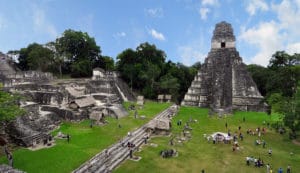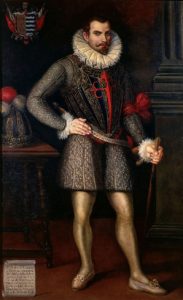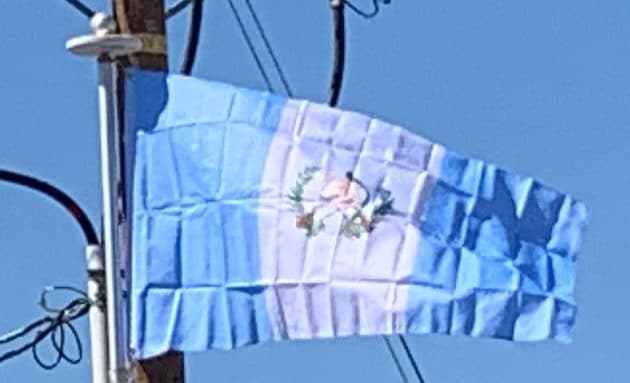The Classic period of Mesoamerican civilization corresponds to the height of the Maya civilization, and is represented by countless sites throughout Guatemala, although the largest concentration is in Petén. This period is characterized by urbanisation, the emergence of independent city-states, and contact with other Mesoamerican cultures.

This lasted until approximately 900 AD, when the Classic Maya civilization collapsed. The Maya abandoned many of the cities of the central lowlands or were killed off by a drought-induced famine. The cause of the collapse is debated, but the drought theory is gaining currency, supported by evidence such as lakebeds, ancient pollen, and others. A series of prolonged droughts, among other reasons such as overpopulation, in what is otherwise a seasonal desert is thought to have decimated the Maya, who relied on regular rainfall. The Post-Classic period is represented by regional kingdoms, such as the Itza, Kowoj, Yalain and Kejache in Petén, and the Mam, Ki’che‘, Kackchiquel, Chajoma, Tz’utujil, Poqomchi‘, Q’eqchi‘ and Ch’orti‘ in the highlands. Their cities preserved many aspects of Maya culture. The Maya civilization shares many features with other Mesoamerican civilizations due to the high degree of interaction and cultural diffusion that characterized the region. Advances such as writing, epigraphy, and the calendar did not originate with the Maya; however, their civilization fully developed them. Maya influence can be detected from Honduras, Guatemala, Northern El Salvador to as far north as central Mexico, more than 1,000 km (620 mi) from the Maya area. Many outside influences are found in Maya art and architecture, which are thought to be the result of trade and cultural exchange rather than direct external conquest.
Colonial Era (1519–1821):
After they arrived in the New World, the Spanish started several expeditions to Guatemala, beginning in 1519. Before long, Spanish contact resulted in an epidemic that devastated native populations. Hernán Cortés, who had led the Spanish conquest of Mexico, granted a permit to Captains Gonzalo de Alvarado and his brother, Pedro de Alvarado, to conquer this land. Alvarado at first allied himself with the Kaqchikel nation to fight against their traditional rivals the K’iche’ (Quiché) nation. Alvarado later turned against the Kaqchikel, and eventually brought the entire region under Spanish domination.

During the colonial period, Guatemala was an audiencia, a captaincy-general (Capitanía General de Guatemala) of Spain, and a part of New Spain (Mexico). The first capital, Villa de Santiago de Guatemala (now known as Tecpan Guatemala), was founded on 25 July 1524 near Iximché, the Kaqchikel capital city. The capital was moved to Ciudad Vieja on 22 November 1527, as a result of a Kaqchikel attack on Villa de Santiago de Guatemala.
On 11 September 1541, the new capital was flooded when the lagoon in the crater of the Agua Volcano collapsed due to heavy rains and earthquakes; the capital was then moved 6 km (4 mi) to Antigua in the Panchoy Valley, now a UNESCO World Heritage Site. This city was destroyed by several earthquakes in 1773–1774. The King of Spain authorized moving the capital to its current location in the Ermita Valley, which is named after a Catholic church dedicated to the Virgen del Carmen. This new capital was founded on 2 January 1776.
Independence and the 19th Century (1821–1847):
On 15 September 1821, the Captaincy General of Guatemala, formed by Chiapas, Guatemala, El Salvador, Nicaragua, Costa Rica, and Honduras, officially proclaimed its independence from Spain. The Captaincy-general was dissolved two years later. This region was formally a part of the Viceroyalty of New Spain throughout the colonial period, but as a practical matter had been administered separately. It was not until 1825 that Guatemala created its own flag.
